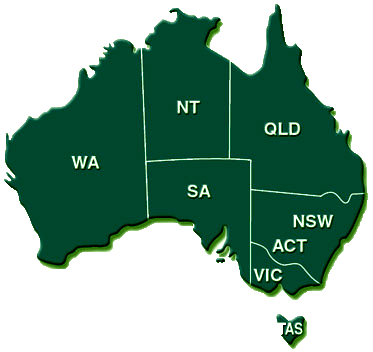An open letter to Prime Minister Anthony Albanese and Defence Minister Richard Marles


Dear Anthony and Richard,
Congratulations on your election win – majority government amid political fragmentation is no small achievement. I know you both care deeply about national security. It’s because our nation is facing a time of unique danger, and your government faces fateful decisions and dangers of its own, that I’m writing you an open letter, something I’ve never done before.
As I understand it, Richard, your priorities will be to get on top of the big programs – submarines, frigates – conduct a force posture and structure review, then work at regional relationships, especially the South Pacific. They’re good priorities. It might be smart to use an outsider on the force structure review. If big changes are needed, you don’t want the author worried about their future promotion prospects.
But your task is much more fundamental. You have inherited a nation that cannot defend itself against a capable adversary. That’s shocking. History is asking you to create capabilities that mean we can defend ourselves. Hopefully we never have to use them.
Everyone knows we can’t defend ourselves, but no one in Defence ever says so. Listen to Peter Varghese, a disinterested authority of the highest credibility. He was the head of the Office of National Assessments, head of the Department of Foreign Affairs and Trade, high commissioner to New Delhi and Kuala Lumpur, John Howard’s international adviser, Gareth Evans’s speech writer. As you know, he’s among the deepest thinkers in these areas ever to work for us.
Late last year, praising the AUKUS deal but pointing to our problems, Varghese wrote: “The truth is we have failed to acquire that capacity – to defend ourselves without relying on the combat assistance of the US – despite it being the objective of Australian defence policy for the last 40 years.”
Varghese is right. That 40-year failure didn’t matter when we relied 100 per cent on the Americans. I believe the Americans are still reliable but their capacity is limited. Even helping Ukraine has seriously depleted some of their weapons and missiles stocks. If the Americans were stretched, or if their politics took a turn against alliances, we might have to defend ourselves in circumstances you both recognise are the most challenging and uncertain since World War II.
So history has a big task for you two and your government – take a country that cannot defend itself and turn it into one that can.
Australian Defence Force personnel, like Defence Department civilians, are generally patriotic, hardworking, decent, good. But they suffer crippling paradigm paralysis. They have lost the muscle memory of doing anything effective in a meaningful time frame. Their culture is scared of change, scared of decisions, scared of responsibility. Their ecosystem creates endless perverse incentives.
This can be deceptive because they talk endlessly of change. Defence is like a giant waterfall. Inside, it seems to be constantly gushing with change. Walk 10m away and it looks exactly the same as it did five days ago, five years ago, 50 years ago.
We have basically the same force structure we had under Robert Menzies. We have replaced like for like, just updating each time, never asking what we need to achieve self-defence. The real preparation is only for police work in the South Pacific, and supporting the Americans with tiny hi-tech supplements within their much bigger deployments.
But we now face an obvious potential threat from China and one day may not have the Americans to save us. We must be able to save ourselves.
The Chinese have shown us how to do this. From the early 1990s they pursued asymmetric military strategy against the Americans. Asymmetry enables the weaker defence force to impose unacceptable costs on the stronger defence force. The Chinese achieved this through relentless development of missiles, initially stationed on their coast.
Now Ukraine has shown us the power of drones. The Turkish Bayraktar TB2 drone has destroyed Russian tanks, anti-aircraft systems, artillery units and much else. It’s a winner. It’s small, easy to control, cheap, just big enough to carry deadly weapons. Pro-Ukraine Lithuanians crowd-funded the purchase of such a drone for just €5m ($7.4m).
Yet in our whole $48bn defence budget we do not have one single armed drone. Paradigm paralysis? This is paradigm insanity. We hardly have any missiles, certainly not enough to fight any kind of military engagement. Ukraine is contiguous with several NATO countries, so it can be resupplied easily. We have the huge advantage of strategic depth but because we are a distant island we also could be cut off from allies and resupply much more easily.
Anthony and Richard, you have huge decisions to make about submarines, missiles, drones, armour and defence industrialisation. If you make the wrong decisions, and things go bad, our national survival could be at stake. Not likely. But surely possible. If you get the existing Defence Organisation to inquire into these matters they will tell you to stick with all the existing purchases and strategy. But that advice is no good. As a retired admiral said to me recently: “Business typically fails quickly and cuts its losses. The navy fails slowly. And as it’s failing, it keeps spending money. And no one ever takes responsibility for failure.”
If either of you ever gets time to read one book about strategic issues, make it Supreme Command by Eliot Cohen. It is the best, most important book I’ve read in this field. It ought to appeal to you both because it makes the case that in the biggest matters of war and peace, only democratically elected politicians have the moral and political authority to make the decisions, not generals or bureaucrats. Against the anti-politician spirit of the day, Cohen also argues that a smart professional politician has a wider understanding of the world than a general does, and therefore often makes better strategic decisions.
Our Defence Organisation has many ways to control a new minister. Burden them with endless paperwork. Baffle them with meaningless complexity.
Two former defence ministers, Christopher Pyne and Kim Beazley, recently did a podcast. Beazley asked why Saab, the maker of the Collins-class subs, had been kept out of the original submarine competitive evaluation process. Pyne said Defence told him Saab didn’t make subs any more. Later he went to Sweden and found it did. “I had been sold a pup,” Pyne remarked. Defence couldn’t bear the thought of dealing with Saab again after the trouble they had when a German company briefly owned Kockums (part of Saab). Beazley replied: “That’s why you have ministers, mate. That’s what you say to people at Russell Hill (Defence), you’re not in charge here, I am.”
Anthony and Richard, if you let Defence run you, if you take advice only from them, we will end up with the same do-nothing, achieve-nothing and ultimately desperately dangerous performance we’ve had for the past 15 years. The nation can’t afford that any more. You should really redesign the ADF with a much greater emphasis on missiles, drones and asymmetric capabilities. We build drones in Australia. We could scale up to armed drones quickly. You should ditch, or reduce the cost and size of, legacy programs not relevant to our maritime challenge or asymmetric strategy.
You have huge decisions ahead of you on missiles, submarines, drones, frigates, armour and defence industrialisation.
The Pentagon about three years ago wrote to its counterpart in Canberra and said: the US cannot at a time of conflict supply you with the missiles you will need because our supply chain will be fully occupied supplying ourselves. As a result, two years ago, the government announced in the Defence Strategic Update that we would build our own missile factories, a sovereign guided weapons capability. But then two years went by and Defence did nothing except execute its own occult internal processes.
Just before the election, the government announced Raytheon and Lockheed Martin, the obvious choices from day one, as its industry partners, with some other players taking part.
The announcement was vague and confused. So that was two years of totally wasted time. We don’t even have the missiles we need for peacetime training. Yet the best guess is we are at least three to five years, perhaps longer, from the first factory producing the first missile. That means seven or eight years from Washington telling us to make some of our own missiles before we get any capability. We’re so dependent on the Americans we even need them to tell us we’re too dependent on them.
On submarines, you were right to support the AUKUS deal which aims eventually to procure nuclear-powered submarines. However, senior figures in the US and Australia tell me there is perhaps only a 50 per cent chance we will eventually get such subs. Powerful parts of the US system are still opposed. We now have 12 Greens senators who will fight it tooth and nail. Intelligence agencies expect the Chinese to clandestinely run social media campaigns against it.
And the technical challenge is epic. These nuclear subs will be the most complex artefacts ever produced on the Australian continent. It took the US and Britain more than 30 years to move from beginning their respective projects to actually getting a nuclear-powered sub into full service, and they had nuclear industries, huge resources and countless advantages.
The navy may well tell you they can get the first nuclear sub into service by 2038. Don’t believe them. Just look at the record. We are already in the midst of our “capability gap” because way back in 2009 we thought we’d be getting the first of 12 new conventional subs in the next few years from now. Our aged Collins-class boats are still the most formidable military asset we have. The navy is doing a life of type extension for each one. If the nukes aren’t coming online by 2038 the navy has talked of doing a second LOTE on the Collins boats. But if we’re operating the Collins in the 2040s and ’50s we will be sending Australian crews into harm’s way in boats 50 and 60 years old.
That’s just ridiculous. You simply have to be realistic and responsible here. We must have another conventional sub in the meantime or we could easily end up with no subs, as we did in World War II. Stick with the AUKUS subs, despite all the uncertainties, but de-risk them by having an interim and alternative capability. Build, in Adelaide, more Collins subs or new Saab subs based on the Collins.
The navy hates this idea. And the navy is dead wrong. The navy claims it would be too hard to operate three types of sub simultaneously, That’s wrong on two counts. It’s not a new type of sub, just more Collins. And in reality we won’t have the nuclear-powered subs soon enough to make it a problem.
Remember, we got the Loyal Wingman, now the Ghost Bat, only because Pyne overrode Defence Department and air force objections. It didn’t fit into the Defence plan. And we got F-18 fighter aircraft only because Brendan Nelson could see more clearly than Defence that the F-35s would be delayed.
Now, the stakes are much higher. We need sustained political leadership.
The Hunter frigates are a ridiculous waste of money. They are overweight, overpriced, delayed and don’t have enough missile launchers to be competitive against Chinese ships. But you can’t just cancel such a big contract with an AUKUS ally. So cut it in half, buy four frigates and go back to building real warships like the air warfare destroyers or, better, American Arleigh Burke-class destroyers. In the meantime, get some firepower into our surface fleet in a hurry. Get anti-ship missiles, helicopter-bearing decks and some air defence units onto our big offshore patrol vessels and build a lot more of them.
You will have to increase the defence budget beyond 2 per cent of gross domestic product if you acquire any subs, AUKUS or conventional, in the meaningful future. But you must be ruthless in spending the existing budget. You can get a lot of capability for $48bn spent wisely. No one spends defence dollars to less effect than we do. Drop the truly absurd tank purchases. Cut the armoured vehicle order from 450 to 200. Spend those billions of dollars on long-range ground-fired missiles. Change the structure of the army so these missiles are deployed on the back of trucks in diverse locations in northern Australia so no enemy could hit them.
One foundational error, one reason defence policy has failed for 40 years, is trying to stretch the defence dollar too thinly over too many different types of highly expensive platforms, which are all procured in such small numbers that they can never have a strategic effect. Throw away tanks and heavy armour in favour of missiles and drones.
Finally, for the biggest defence projects, don’t let bureaucrats or folks in uniform run them. Get people from industry, not necessarily defence industry. Someone who has delivered big infrastructure projects understands wrangling thousands of subcontractors, pushing projects forward, keeping budgets under control, meeting deadlines. Essington Lewis came from BHP to do this during World War II as director-general of the department of munitions.
And within Defence itself, put Mike Pezzullo, the secretary of the Home Affairs Department, in charge. He ain’t pretty but he gets things done. Every system needs its Pezzullos. We don’t have anywhere near enough.
Forgive my writing this personal letter. I’ve been covering foreign affairs and defence issues for 40 years. I’m worried, really worried, because our external situation has never been worse, our internal response never more inadequate.
You guys can change the nation’s fate. Think of the Hawke-Beazley model. Then put it on steroids.
All the best,
Greg
GREG SHERIDAN
FOREIGN EDITOR


